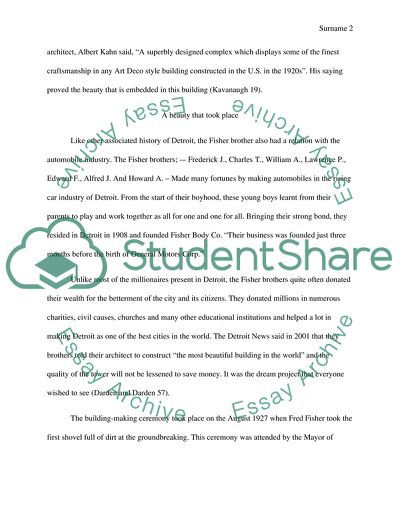Cite this document
(Fisher Building, Detroit, Michigan Case Study Example | Topics and Well Written Essays - 1500 words, n.d.)
Fisher Building, Detroit, Michigan Case Study Example | Topics and Well Written Essays - 1500 words. https://studentshare.org/history/1779194-fisher-building-detroit-michigan
Fisher Building, Detroit, Michigan Case Study Example | Topics and Well Written Essays - 1500 words. https://studentshare.org/history/1779194-fisher-building-detroit-michigan
(Fisher Building, Detroit, Michigan Case Study Example | Topics and Well Written Essays - 1500 Words)
Fisher Building, Detroit, Michigan Case Study Example | Topics and Well Written Essays - 1500 Words. https://studentshare.org/history/1779194-fisher-building-detroit-michigan.
Fisher Building, Detroit, Michigan Case Study Example | Topics and Well Written Essays - 1500 Words. https://studentshare.org/history/1779194-fisher-building-detroit-michigan.
“Fisher Building, Detroit, Michigan Case Study Example | Topics and Well Written Essays - 1500 Words”. https://studentshare.org/history/1779194-fisher-building-detroit-michigan.


